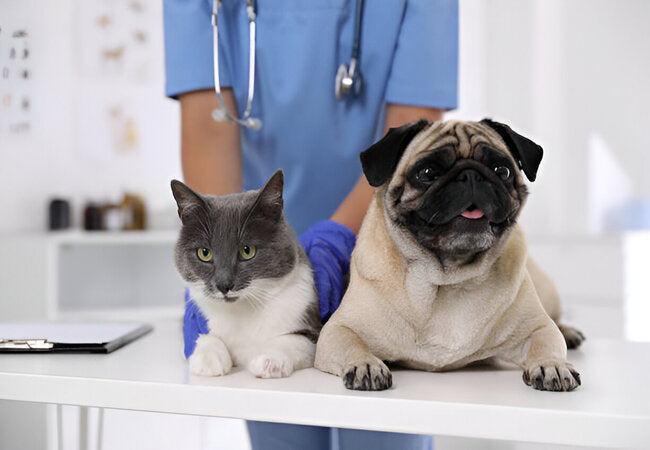Dog & Cat Biopsy Procedures 2025: Expert Veterinary Guide 🩺🐾

In this article
Dog & Cat Biopsy Procedures 2025: Expert Veterinary Guide 🩺🐾
By Dr. Duncan Houston BVSc
Hello! I’m Dr Duncan Houston BVSc, veterinarian and founder of Ask A Vet. A biopsy is one of the most important diagnostic tools in veterinary medicine—it helps establish a definitive diagnosis from lumps, skin lesions, or internal tissues in both dogs and cats. In this updated 2025 guide, we’ll explore the different types of biopsies, when they’re needed, how to prepare, understand costs and risks, and ensure optimal recovery for your companion 🐶🐱.
1. 🎯 Why Biopsy? The Medical Purpose
Biopsies allow pathologists to examine tissue or cellular samples under the microscope, answering critical questions:
- Is a lump benign or malignant?
- What type of tumor is present? (e.g., mast cell, adenocarcinoma)
- What is the disease process in skin, organs, or masses?
Without a biopsy, vets cannot confidently advise treatment—whether surgery, chemotherapy, or antibiotic therapy—and prognosis remains uncertain.
2. 🧪 Types of Biopsies
2.1 Fine Needle Aspiration (FNA)
- Nondestructive sampling using a thin needle to aspirate cells—like vaccine injections
- Often no sedation; may use if sampling spleen or liver
- Cost: $50–$200; depends on sedation/ultrasound use
- Fast results may be inconclusive, requiring a biopsy
2.2 Punch Biopsy
- Primarily for skin/lumps, using a circular blade (1–8 mm)
- Local anesthesia, and sometimes sedation
- Small stitches needed; quick turnaround in histopathology report
2.3 Incisional vs Excisional Biopsy
- Incisional: remove a piece of tissue when the mass is large/ internal
- Excisional: removal of an entire lump—often diagnostic and therapeutic
- Requires sedation or general anesthesia; small incisions, then sutures
2.4 Internal Organ Biopsy
- Sample from internal organs—liver, kidney, spleen, lung via surgery or endoscopy
- May involve a laparotomy or endoscopic technique
- Full-thickness biopsy gives highly accurate diagnostic information
2.5 Fluid Cytology & Needle Aspirate
- For lumps filled with fluid or biopsies from abdominal effusion
- Less invasive and often performed under ultrasound guidance
2.6 Liquid Biopsy: The Future
- Blood-based test detecting cancer DNA fragments from tumors
- Non-invasive screening for early detection
- Cost ranges $750–1,000 plus veterinary exam fees
- Used to guide additional diagnostics or treatment decisions
3. 📋 Preparation & Procedure
- FNA: Minimal prep; may require site clipping and ultrasound if internal
- Punch skin biopsy: Clip, clean, local anesthetic, and optional sedation
- Incisional/excisional and internal: General anesthesia with IV catheter and fluid support
- Liquid biopsy: Standard blood draw from a vein
- Always collect patient history, examine lesion/chest/abdomen, and discuss risks
4. 💵 Costs Overview
| Procedure | Estimated Cost (USD) |
|---|---|
| FNA | $50 – $200+ |
| Punch biopsy | $100 – $300 |
| Incisional/excisional biopsy | $300 – $1,200+ |
| Internal organ biopsy | $800 – $2,000+ |
| Liquid biopsy | $750 – $1,000 (+ exam/lab fees) |
Examples:
- Reddit: “Biopsy estimate $800–1,000+”
- Southern California vet: $1,100 total, including biopsy and lab send-out
5. ⚠️ Risks & Complications
While safe, biopsy procedures come with considerations:
- Bleeding or bruising—especially in organ biopsies; ultrasound follow-up needed
- Infection—site care and antibiotics may be needed
- Need for sedation or anesthesia, with associated risk
- Pain at biopsy site—managed with analgesics
- Non-diagnostic results requiring repeat biopsy
- Rare: tumor seeding along needle path—guarded technique reduces risk
6. 🏥 Post-Biopsy Recovery & Aftercare
- Minor procedures (FNA, punch): minimal recovery—keep clean & monitor for bleeding
- Surgical biopsies (incisional/excisional/internal): rest, suture removal at 7–14 days, prevent licking (use e-collar)
- Internal biopsies: provide pain relief, appetite monitoring, activity restriction; follow-up imaging for complications
- Results usually come back in 5–10 days, guiding further care
7. 📈 Benefits & Diagnostic Value
- Enables definitive diagnosis—benign vs malignant
- Shapes treatment plans—surgery extent, chemo, screening options
- Organ biopsies reveal chronic/life-threatening conditions
- Liquid biopsy detects cancer early, possibly before symptoms
8. 🧩 Ask A Vet, Woopf & Purrz Support
- Ask A Vet: Remote consults for lump evaluation, timing strategy, sedation decisions
9. ✅ Final Thoughts
In 2025, biopsy remains essential in veterinary diagnostics—unlocking clues hidden beneath the surface. Whether it’s a tiny skin lesion or an internal organ that’s not functioning properly, selecting the right biopsy method, understanding the process, and preparing for recovery positions your pet for the best outcome. With expert insight from Ask A Vet and care tools from, navigating biopsies becomes less daunting and more empowering. Knowledge leads to informed decisions—let’s give our pets clarity (and optimal care) when it matters most 🐶🐱💙.


